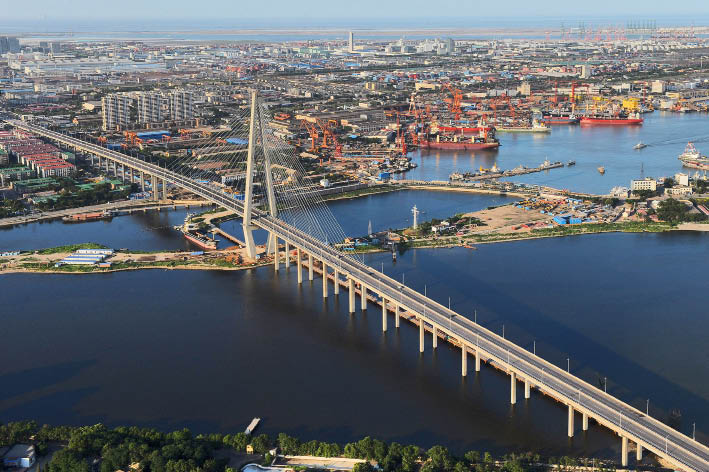By ZHANG XIWEN
By ZHANG XIWEN
THE 1980s saw the rise of Shenzhen Special Economic Zone, followed in the 1990s by Pudong in Shanghai. And by the 21st century, China had witnessed the astounding development of Tianjin Binhai New Area (Tianjin New Coastal District). In only five years, the area’s total economic output skyrocketed from RMB 200 billion to RMB 600 billion, sustaining the Chinese economic miracle that has lasted for three decades.
In 2010, Binhai outpaced Pudong in GDP for the first time, and it maintained the strong growth momentum in 2011: its gross output reached RMB 620.69 billion, 23.8 percent more than the previous year; industrial output increased by 29.4 percent and fiscal revenue by 37.1 percent. Its GDP set a new record in the first half of 2012 at RMB 320.056 billion.
Its fast development has attracted much investment. Last year, the foreign capital it utilized in real terms amounted to US $8.5 billion, a markup of 30.4 percent. The consensus among entrepreneurs is that, if you missed Shenzhen and Pudong, you definitely don’t want to miss the opportunities offered by Binhai.

Take the Initiative and Seize the Opportunities
Binhai New Area is under the jurisdiction of the municipality of Tianjin where the eastern part of the North China Plain meets the Pacific Ocean. It covers a total area of 2,270 square kilometers, with a coastline of 153 kilometers and a population of 2.48 million.
In the 1980s when Shenzhen became the most dynamic economic zone in China, what today is Binhai was then still a barren salt marsh. In 1986, Deng Xiao-ping, chief architect of China’s reform and opening-up, pointed out during his visit to Tianjin: “It is an advantage of the city to have a vast area of undeveloped land between the port and the city proper. I believe the area has a great potential.” He also wrote: “The area is very promising.”